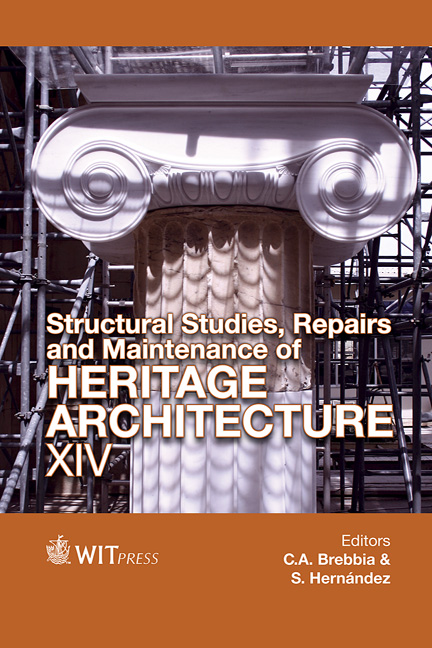Sensitivity Analysis Applied To The Evaluation Of Earthquake Damage In Historic Towers
Price
Free (open access)
Transaction
Volume
153
Pages
12
Page Range
721 - 732
Published
2015
Size
1,134 kb
Paper DOI
10.2495/STR150601
Copyright
WIT Press
Author(s)
S. Ientile, S. Russo
Abstract
Masonry towers are part of the wide Italian architectural heritage, and in many cases are a distinctive character of town centres. This structural type has a greater vulnerability than most masonry buildings due to its vertical development subjecting the structure to significant risks, as a function of the high tensile stress at the base, the effects of thermal variations and the dynamic effects of seismic events. Observing the damage of existing structures during past earthquakes, Italian legislation for cultural heritage (LL.GG. 2011) has identified the most common failure modes of different building typologies, in order to evaluate the dynamic behaviour of structures. The global collapse mechanisms of towers are nearly related to the geometry of the structure, the construction technology and material, the soil and the foundation structure. This paper investigates the methods of analysis and assessment of the damage of a case study such as the Tower of St. Stefano di Sessanio (AQ), struck by the L’Aquila earthquake of April 6, 2009, which caused its total collapse. A simplified mechanical model and a FE model were used to estimate the possible causes of the collapse, and a sensitivity analysis was carried out to evaluate the results.
Keywords
heritage masonry buildings, seismic vulnerability, FE model, historical towers, damage assessment




